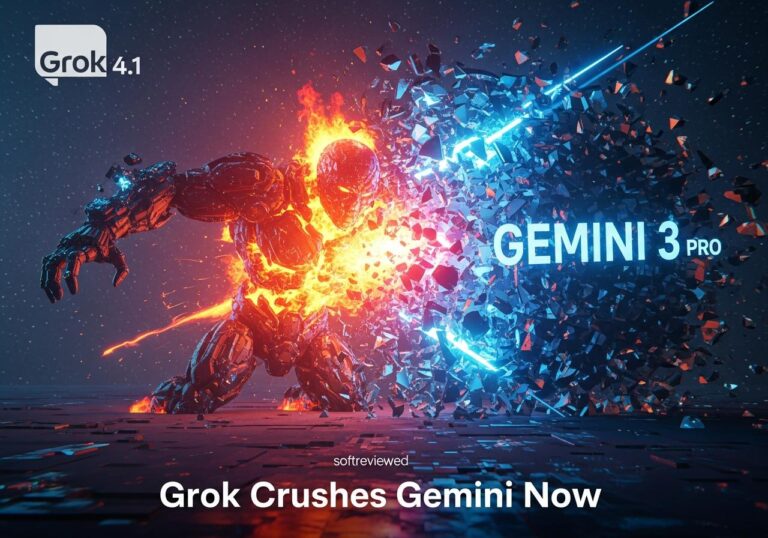🎙️ ChatGPT Voice Transcription & Summarization
Transform your conversations into actionable insights with ChatGPT’s advanced audio processing capabilities
✍️ Real-Time Transcription & Summarization
Automatically converts spoken audio into text and summarized key points during meetings or voice notes, making it easy to capture and review important information without manual note-taking.
📋 Actionable Outputs
Generates project plans, emails, code, or action items directly from conversation summaries stored as canvases. Transform your discussions into concrete deliverables with minimal effort.
🖥️ Availability & Accessibility
Currently limited to ChatGPT Pro, Enterprise, and Edu users on macOS, with potential future expansion to other platforms. Stay tuned for wider availability across devices.
⏱️ Session Duration
Supports up to 120-minute live transcription sessions with instant action-item detection. Perfect for capturing extended meetings, lectures, or brainstorming sessions.
🔒 Privacy-Focused Storage
Raw audio is deleted after transcription to protect user data. Only the text transcription remains, ensuring your sensitive conversations remain private and secure.
🔄 Contextual Integration
Leverages cloud-connected documents to enrich summaries with relevant information, providing more comprehensive insights by connecting your conversation with existing knowledge.
OpenAI is rolling out a powerful new feature for its ChatGPT macOS app called Record Mode, and it’s poised to change how you handle meetings, brainstorming sessions, and voice notes. Initially available for paid users—including Pro, Team, Enterprise, and Edu plans—this new tool transforms your Mac into a smart audio assistant capable of transcribing and summarizing conversations in real time. But what exactly is it, how does it work, and what about those screen-seeing features we were promised?
This article breaks down everything about the new ChatGPT Record Mode. We'll explore its core functionality, how it fits into your workflow, and critically, examine the privacy measures OpenAI has put in place. If you’ve ever wished for an assistant to take notes for you, this might be the update you’ve been waiting for.
Your Mac's New Ears: Introducing ChatGPT Record Mode
Forget frantically typing to keep up with a fast-paced discussion. Record Mode is a new function built directly into the ChatGPT desktop app for macOS that lets the AI do the heavy lifting. At its heart, it's an advanced audio-capture tool. You can record yourself, a meeting, or a brainstorming session, and ChatGPT will not only transcribe the audio but also intelligently process it.
Think of it as a combination of a voice recorder, a transcription service, and a smart analyst all rolled into one. It’s designed to turn passive listening into active, usable output. The feature is being progressively rolled out to eligible users at no extra cost, making it a significant value-add for subscribers.
How It Turns Conversations Into Actionable Insights
The magic of Record Mode isn't just that it can hear you; it's what it does with what it hears. The entire process is designed to be seamless, moving from spoken words to structured, useful information without you needing to switch between a dozen different apps.
From Live Meeting to Structured Summary
Imagine you’re in a project kickoff meeting. Instead of assigning someone to take minutes, you simply activate Record Mode. As the conversation flows, ChatGPT listens in. Once the meeting is over, you don't just get a wall of text. Instead, the AI provides you with a "summary canvas."
This canvas is a neatly organized summary that can include:
- 📌 Key Highlights: The most important points from the discussion.
- ✅ Action Items: A clear list of tasks and who they might be assigned to.
- 💡 Key Decisions: A record of any decisions made during the call.
- 🤔 Follow-up Questions: Potential areas that need further clarification.
You can then take this summary and ask ChatGPT to reformat it. Need to send a follow-up email? Ask it to "turn this summary into a professional email for the project team." Need to create a project plan? "Generate a project plan based on these action items."
What Happens When You Press 'Record'?
The user experience is straightforward. A new record button appears in the ChatGPT for macOS app.
- ➡️ Start Recording: Click the record button. You'll need to grant the app microphone and system audio permissions the first time. A timer starts, and the app begins to transcribe live.
- ➡️ Capture the Conversation: You can record for up to 120 minutes, pausing and resuming as needed. The feature is capable of distinguishing between multiple speakers, though it excels in English.
- ➡️ Process and Summarize: When you end the session, ChatGPT processes the entire recording. Within moments, you receive the transcript and the structured summary canvas right in your chat history.
Putting Record Mode to the Test: Practical Use Cases
This feature isn't just a novelty; it has immediate, practical applications that can streamline various workflows.
- Team Meetings: Capture every detail of a client call or internal sync without missing a beat. Generate instant meeting minutes and assign action items on the spot.
- Brainstorming Sessions: Let ideas flow freely without stopping to write them down. Record the session and get a structured list of all the concepts discussed.
- Academic Lectures & Research: Students and researchers can record lectures or interviews and receive an instant, searchable transcript and summary, making studying and analysis far more efficient.
- Solo Voice Notes: Capture a fleeting idea while working on your computer. Just speak your thoughts, and ChatGPT will organize them into a coherent note for you to revisit later.
Hold On, I Thought ChatGPT Was Going to See My Screen?
This is an important point of clarification. If you follow AI news, you probably remember OpenAI’s "Spring Update" event where they demonstrated a stunning new version of ChatGPT that could see a user's screen and have a spoken conversation about what was happening in real-time. That advanced, multimodal capability—often referred to as screen awareness or vision features—was indeed previewed but has been delayed.
ChatGPT Record Mode is a different feature. It is focused exclusively on audio. While the long-term vision for ChatGPT is an AI that can see, hear, and speak, Record Mode is a more focused, audio-first tool that is ready and rolling out today. So, while you can't yet have ChatGPT watch you code and offer suggestions, you can have it listen to your meeting about the code and summarize the next steps.
Privacy in the Spotlight: Is It Safe to Let ChatGPT Listen?
Whenever a tech product gains a new sensory ability like "listening," privacy becomes the number one concern. How is your data being handled? Who has access to it? Is it being used to train models? OpenAI appears to have anticipated these questions and has built in some significant privacy-centric features from the start.
OpenAI's "Audio Deleted" Promise
The most critical privacy feature, as reported by multiple sources and detailed in OpenAI's documentation, is what happens to your voice data. According to OpenAI, the raw audio file from your recording is deleted immediately after it has been transcribed.
This means the actual sound of your voice and the conversation isn't stored on OpenAI's servers long-term. What is saved is the text transcript and the generated summary, which are stored in your chat history just like any other ChatGPT conversation (and subject to your existing privacy settings).
Control at the Admin Level
For larger organizations, control is key. OpenAI has given administrators of Team, Enterprise, and Edu workspaces the ability to disable Record Mode at the workspace level. If a company's data policy doesn't allow for this kind of audio processing, the IT department can simply switch it off for all users, ensuring compliance and peace of mind. You can learn more directly from the official documentation about how to record in the ChatGPT desktop app.
How Record Mode Stacks Up in the Real World
How does this new feature compare to traditional methods or other existing tools? While it’s not a one-to-one replacement for every transcription service (some of which offer more detailed speaker identification or specialized vocabularies), its integration within the ChatGPT ecosystem is its killer feature.
Comparison Table: A New Way to Work
| Feature | ChatGPT Record Mode | Manual Note-Taking | Dedicated Transcription Tools (e.g., Otter.ai) |
|---|---|---|---|
| Speed | Instant transcription and summary | Slow, prone to errors, distracting | Fast transcription, summary may take time |
| Summarization | ✅ Excellent, AI-powered summaries | ⛔️ Entirely manual | ✅ Good, often AI-powered |
| Integration | Seamlessly integrated with ChatGPT | Requires separate apps/documents | Separate platform, requires export/import |
| Contextual Follow-up | ✅ Can ask follow-up questions about the content | ⛔️ None | ⛔️ Limited to the transcript itself |
| Cost/Effort | Included with paid plans, low effort | "Free" but high mental overhead | Often requires a separate subscription |
The Future is Conversational: What's Next for AI Assistants?
Record Mode is more than just a feature; it's a strategic step in OpenAI's push to make AI a more deeply embedded, conversational partner. By adding a robust "sense of hearing," ChatGPT moves closer to becoming a true digital assistant that you interact with naturally, rather than just through typed commands.
We can speculate on where this is headed:
- 🚀 Expansion to Other Platforms: While currently on macOS, a rollout to Windows and mobile apps seems like a logical next step to compete with assistants from Google and Apple.
- 🚀 Deeper Integration: Imagine Record Mode automatically activating when you join a calendar meeting or being able to link summaries directly to project management tools like Asana or Jira.
- 🚀 The Return of Vision: The delayed screen-aware features will likely reappear eventually, creating a super-assistant that can both see what you're doing and listen to your conversations about it, offering an unparalleled level of contextual help.
The Final Word: A True Productivity Boost?
While ChatGPT Record Mode may not be the all-seeing, all-knowing AI assistant from the sci-fi demos just yet, it is something arguably more valuable today: a practical, powerful, and privacy-conscious productivity tool. By offloading the tedious tasks of transcription and note-taking, it frees up mental energy for what humans do best—thinking, creating, and collaborating.
For paid ChatGPT users on a Mac, this is a significant and welcome upgrade. It's a clear signal that the future of work involves a much tighter and more conversational relationship with our AI tools. The only question is, are you ready to let them listen?







